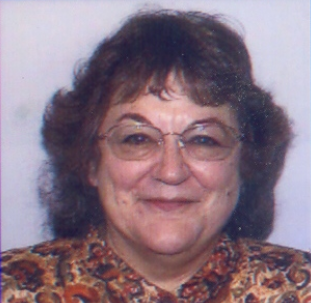Recently, the staff of the AHA sat down together to review the way we interact with members in our everyday work. New staff members (who were AHA members even before being hired) pointed out to us that much of what we talked about that day is invisible to members, and certainly to those who have not yet joined the Association. The staff members urged me to use this space to make more obvious what the Association does for the profession. Here are key examples.
Perhaps our greatest financial contributions are aimed at graduate students, whom we support on the principle that they represent the field’s next generation. We subsidize every graduate student membership: what students pay does not cover the cost of providing them with the materials and services that come with membership status. In addition, we operate the Job Register at the annual meeting without charge to students using the service (the fees paid by participating institutions do not begin to cover the costs of offering the service).
The Association recognizes that the graduate phase of professional life can be agonizing, and it has worked hard over the years to provide the broadest possible access to job openings, to hold interviewing departments to high professional standards, and to humanize the process as much as possible. Part of this effort is the annual “session” organized by the Professional Division in which senior historians of great stature engage in mock interviews with graduate students to give them some practice and pointers for success.
The Association has also issued a number of helpful pamphlets (e.g., Becoming a Historian: A Survival Manual for Women and Men and Careers for Students of History) and is working on others (about, for example, teaching graduate students to teach and about job opportunities at community colleges).
Most immediately, the Association has committed support in the form of the operating costs and staff time for the two-year ad hoc Task Force on the Role of Graduate Students in the AHA. The task force has produced an impressive roster of sessions for the annual meeting, is working on a general guideline regarding the nature of graduate education, and will present the Council with specific recommendations toward the end of its second year.
Our publications are doubtless the most visible of the services that we provide. AHA publications are tangible expressions of the intellectual life of historians, and they are produced for the benefit of all AHA members. It is important to emphasize that the range of publications that the AHA offers reflects the kind of contribution that can be made by an umbrella organization. Our uniqueness emerges in two forms. First, while we present research results (at our annual meetings and in the American Historical Review), we try to position these results differently than a specialist organization would. Our readers are encouraged not to look for work only in their own specialization (they can turn to any number of other, specialist journals for that purpose), but to use the opportunity of reading the AHR to reach across specialized boundaries to seek out helpful innovations in method, theorizing, thematic frameworks, and the like. Our goal is to foster scholarly communication around the fundamentals that make us identify ourselves as historians. Second, we are unique (through our newsletter and pamphlet series) in fostering scholarly communication about the implications of or “next steps” beyond presentations of research in the intellectual process. That is, we encourage synthesis, especially in our overview pamphlets written by premier experts in particular fields but aimed at nonspecialist audiences. We also encourage scholar-teachers (including public historians) to learn from one another’s experiences. Perspectives, for example, regularly offers articles on how to rethink scholarly specialties, how to introduce active learning to fundamentally alter the presentations of the “master narrative,” and how to plan ahead in creating new curricular programs that reflect important changes in the intellectual content of the discipline. (This issue of Perspectives illuminates this range of “next steps” especially well, I think.)
As we rely more and more on electronic forms of scholarly communication, the AHA is working hard to explore how these new forms of communication can be used, in conjunction with print, to facilitate the work of historians. Creation of our home page on the World Wide Web this past year, and the placement there of a range of information accessible not only to members but to all those interested, represents the first stage in our development of new forms of communication. Next to receive our attention will be creation of a fee space, where members will be able to access (without fee) materials they also receive in print. Most of these materials will, however, have “values” added that will take advantage of the new medium. The AHA also plans to convene a broad group of historians, librarians, and technology experts to explore the kinds of standards and guidelines those producing historical studies should be using in order to facilitate effective electronic linkages and searching. These explorations, too, we see as among the most important services the AHA is beginning to provide to the field.
Usually visible only in moments of crisis are our ongoing services to the profession. We keep and regularly publish important statistical analyses of the field, especially issues relating to the job market and Ph.D. production; these are available for departmental use when requested. We have also initiated larger projects, such as the current one on overuse of part-time and adjunct faculty; some 15 other associations and organizations have joined us in this project. We represent and organize historians for participation in other projects too, including the American Association of Higher Education (AAHE) Project on Peer Review of Teaching (using portfolios), the Council of Graduate Studies/Association of American Colleges and Universities project on training for teaching assistants, and the like. I have already mentioned the Professional Division’s annual efforts to help job candidates practice their interviewing skills. Through Professional Division and the Council, the AHA also addresses specific topics when requested, including downsizing, TAs as workers, and other issues emerging in these tight economic times. In addition, the division serves (when appropriate) as adjudicator in professional disputes regarding plagiarism, unprofessional conduct, job searches, and so on.
The Research Division, in similar fashion, pursues research issues of import to the profession. First and foremost, it oversees the work of the annual meeting program committee and the AHR. In addition, it takes on specific issues as they emerge. These issues are usually related to archives and libraries and the support of research (e.g., the fate of the National Endowment for the Humanities). The division has learned much in recent months about contracts and electronic copyright issues, trying to sort out partnerships and innovative forms of dissemination that will serve the interests of the Association and its members. The division also spends extraordinary amounts of time on four grant programs, awarding more prestige than money to deserving newer scholars. And it becomes involved, as appropriate, in intellectual projectsseveral new projects will come to the division over the course of the next year. Indeed, the Research and Teaching Divisions have expressed strong interest in pursuing projects jointly that will underscore the fundamental connections between teaching and research.
The Teaching Division has focused especially in the last year or so on new projects designed to further its long-term agenda of supporting and publicizing good teaching and solidifying connections among teachers at all levels. A proposal has just been submitted for a project that will bring together three regional clusters of faculty for the purpose of reconceptualizing the introductory survey course; one by-product of the project should be much stronger working relationships in the three regions between community college and four-year faculty. A related initiative is a series of presentations by or on the AHA at five regional meetings of the Community College Humanities Alliance. Other projects in the works include creating an electronic “text” on world history and bringing to teaching faculty (at all levels) the results of research on cognition and learning. (An exploratory session on this project will take place at the 1997 AHA annual meeting in January.) Furthering AHA connections to K12 teachers also figures large in the Teaching Division agenda; this topic will be the focus of the greatest number of discussion items at the next division meeting. A large portion of AHA resources in the area of teaching is allocated to the maintenance (we provide by far the largest contribution) of the National History Education Network (NHEN), which is now housed at Carnegie Mellon University in the history department. Through NHEN we have the opportunity to influence state-level advocacy issues relevant to student preparation; we also support partnerships across the country between K12 teachers and postsecondary faculty, designed to improve the curriculum and teaching of history in the schools.
The Council and three divisions are aided in their work by the Committee on Women Historians, the Committee on Minority Historians, and now the ad hoc Task Force on the Role of Graduate Students in the AHA. The special focuses of these groups have enabled them to foster intellectual projects (both ongoing committees are creating pamphlet series), monitor pipeline issues, and target special efforts to affect the pipeline. Each group organizes one or more panel sessions at the annual meeting, and each is also working out special strategies for bringing to members’ attention the issues they see as most significant in regard to “doing history in the 21st century.”
I have already alluded to most of the activities that take place during the annual meeting—the foremost offering the Association makes to “the field” and an activity that takes up half of our staff time for more than four months each year (staff members who work on the annual meeting have full-time jobs in addition to coordinating the conference). At the annual meeting, the AHA fosters peer-reviewed intellectual exchange; offers a job register to keep access to employment as open as possible; awards prizes to recognize outstanding scholarship and teaching; and, especially, offers affiliated societies the opportunity to meet and to hold as many sessions as they like, without charge.
How can the Association offer such services and products to so many people in the field? The question is a good one—we rely on one of the smallest ratio of full-time staff to members of any scholarly society. Our infrastructure is modest (but improving); we are attempting to expand to meet the demands identified during our year of planning discussions, without significantly increasing our staffing or the costs related to our operation. This will only work so long as members recognize the value of what we offer them and so long as they are willing to pay for it.

